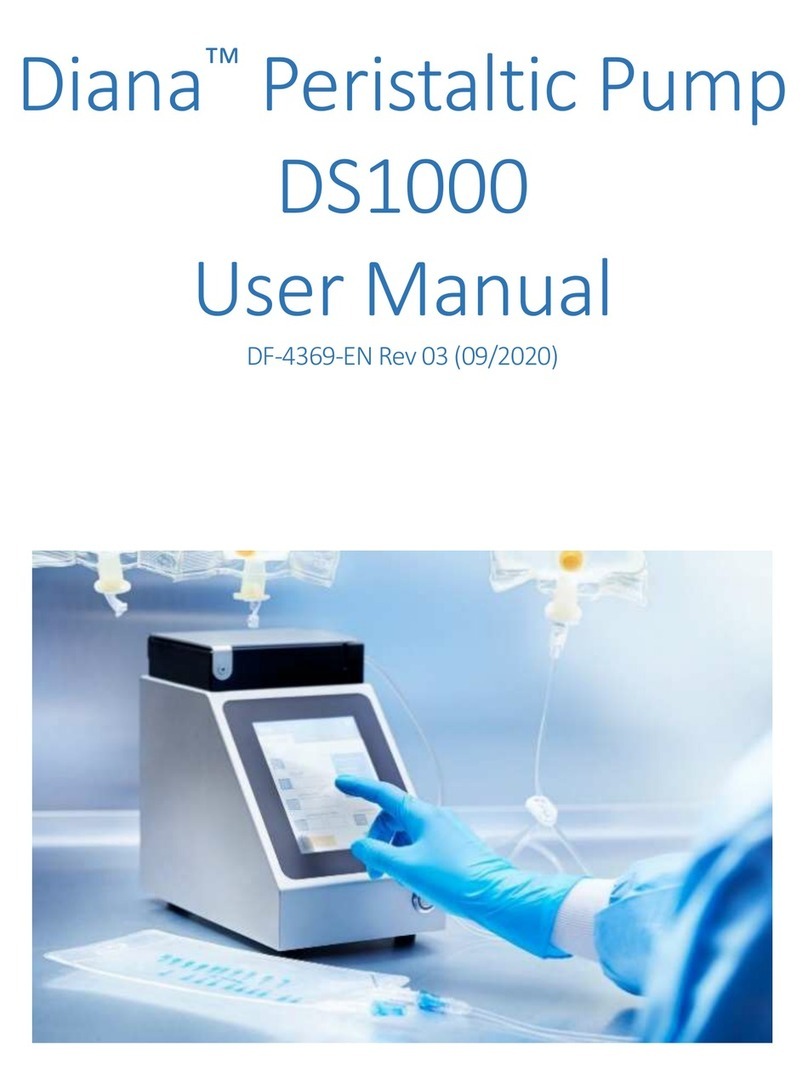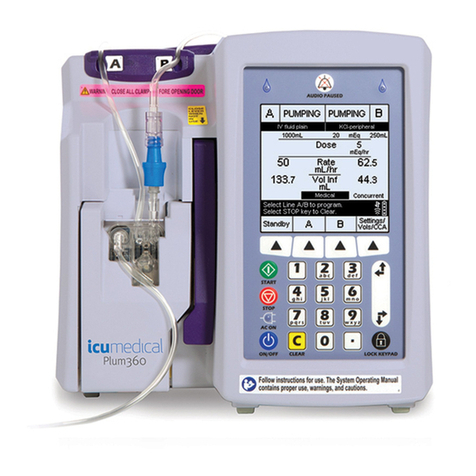
CONTENTS
LifeCare PCA iv Technical Service Manual
5.2.7 CLEANINGTHEPOWERCORDSTRAP ...........5‐11
5.2.8 CLEANINGTHEPATIENTPENDANTSTRAP .........5‐11
5.2.9 CLEANINGINFUSERACCESSORIES ............5‐11
5.2.10 RINSINGTHEINFUSER .................5‐12
5.2.11 DRYINGTHEINFUSER.................5‐12
5.2.12 CLEANINGSPILLSDURINGTHECOURSEOFPATIENTCARE ..5‐12
5.3 DISINFECTION .......................5‐13
5.3.1 APPROVEDDISINFECTIONSOLUTIONS..........5‐13
5.3.2 DISINFECTIONSUPPLIES ................5‐14
5.3.3 PREPARINGTHEINFUSERFORDISINFECTION .......5‐14
5.3.4 GENERALDISINFECTIONINSTRUCTIONS.........5‐14
5.3.5 DISINFECTINGEXTERIORSURFACES ...........5‐15
5.3.6 DISINFECTINGTHEVIALCOMPARTMENT .........5‐16
5.3.7 DISINFECTINGTHEPOWERCORDSTRAP .........5‐17
5.3.8 DISINFECTINGTHEPATIENTPENDANTSTRAP.......5‐17
5.3.9 DISINFECTINGACCESSORIES..............5‐17
5.3.10 RINSINGTHEINFUSER .................5‐17
5.3.11 DRYINGTHEINFUSER.................5‐17
5.4 PRODUCTHANDLINGANDDISPOSAL .............5‐18
5.5 PREVENTIVEMAINTENANCE .................5‐19
5.5.1 PM/PVTCHECKLIST..................5‐20
5.5.2 LABELSINSPECTION..................5‐21
5.5.3 ACPOWERCORDINSPECTIONANDTEST.........5‐23
5.5.4 FRONTENCLOSURE,REARENCLOSURE,CRADLEASSEMBLY,
ANDSECURITYDOORINSPECTIONAND TEST .......5‐25
5.5.5 RUBBERFOOTPADINSPECTION .............5‐27
5.5.6 POLECLAMPASSEMBLYINSPECTIONANDTEST.......5‐28
5.5.7 KEYPAD,DISPLAYS(LED/LCD),ANDINDICATORS
INSPECTION....................5‐29
5.5.8 PATIENTPENDANTINSPECTION .............5‐31
5.5.9 BARCODEREADERWINDOWINSPECTION,TEST,
ANDCLEANING ...................5‐32
5.6 PERFORMANCEVERIFICATIONTEST..............5‐34
5.6.1 REQUIREDEQUIPMENT .................5‐34
5.6.2 TESTSETUP.....................5‐35
5.6.3 STUCKINJECTORSWITCHPINTEST ............5‐35
5.6.4 SELFTEST......................5‐36
5.6.5 BIOMEDMODETESTS .................5‐38
5.6.6 DELIVERYACCURACYTEST...............5‐39
5.6.6.1 DELIVERYACCURACYTEST(ALTERNATEMETHOD)..5‐41
5.6.7 OCCLUSIONTEST...................5‐41
5.6.8 ELECTRICALSAFETYTEST................5‐41
5.6.9 ENDOFTHEPVT...................5‐42
5.7 NETWORKCONNECTIVITYCHECKS...............5‐43
5.8 BATTERYOPERATIONOVERVIEW...............5‐46
5.9 BATTERYCHARGER.....................5‐46
Section6
TROUBLESHOOTING........................6‐1
6.1 TECHNICALASSISTANCE...................6‐1
6.2 DIAGNOSTICMODE .....................6‐2
6.3 ALARMMESSAGESANDERRORCODES .............6‐2
6.3.1 OPERATIONALALARMMESSAGES............6‐3
6.3.2 ERRORCODESREQUIRINGTECHNICALSERVICE......6‐6
6.4 TROUBLESHOOTINGPROCEDURES...............6‐12






























